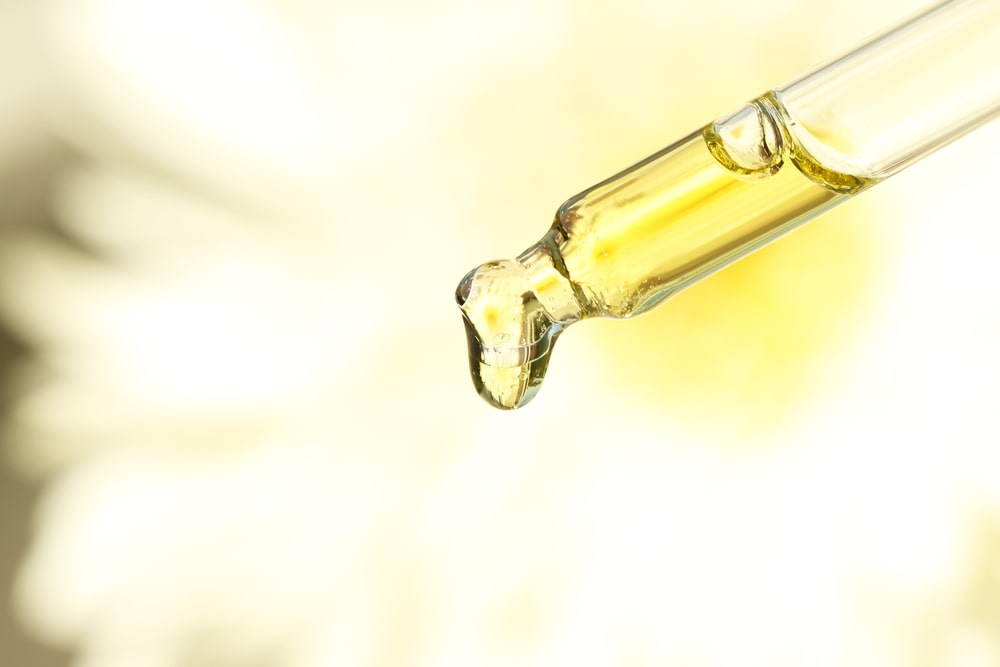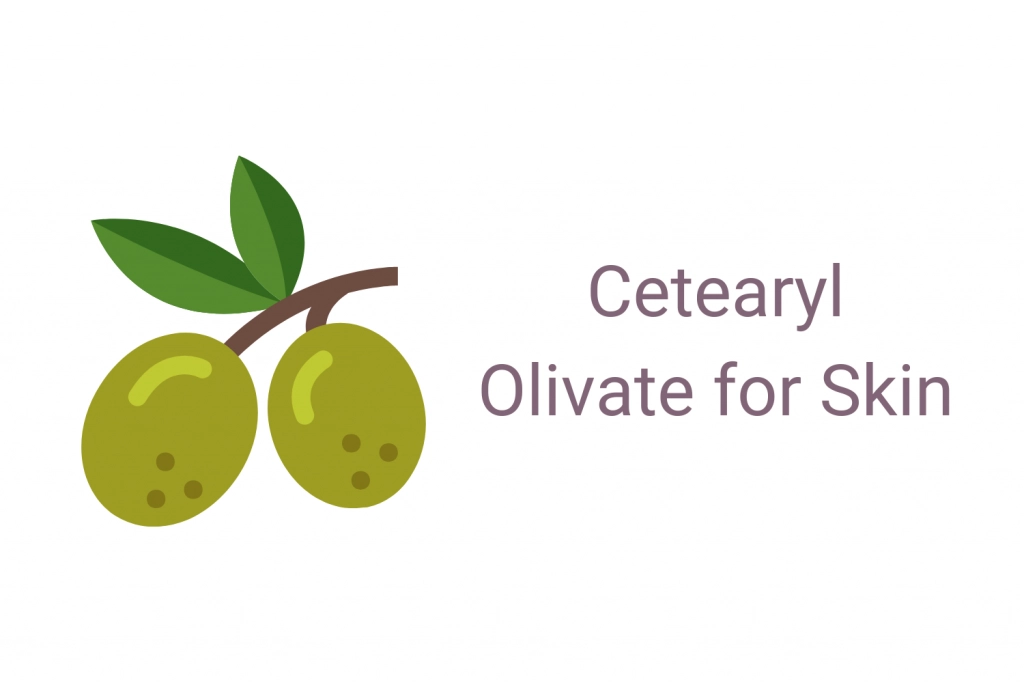There are many skincare ingredients available on the market, and some are purported to have amazing benefits. One example of this is squalane. It gets a lot of hype and rightfully so!
This post may contain affiliate links. Read the full disclosure here
It’s a fantastic plant-based skincare ingredient. Squalane can be sourced from plants such as sugar cane and it offers anti-aging, moisturizing, and skin protecting benefits.
What is Squalane?
In short, squalane is a hydrocarbon (C30H62) and a saturated fatty acid, meaning it doesn’t have any reactive double bonds in its structure. As a skincare ingredient, squalane is classified as an emollient and skin conditioning agent by the Safer Choice of the U.S. Environmental Protection Agency (EPA). Here are some additional details you might find interesting about squalane.
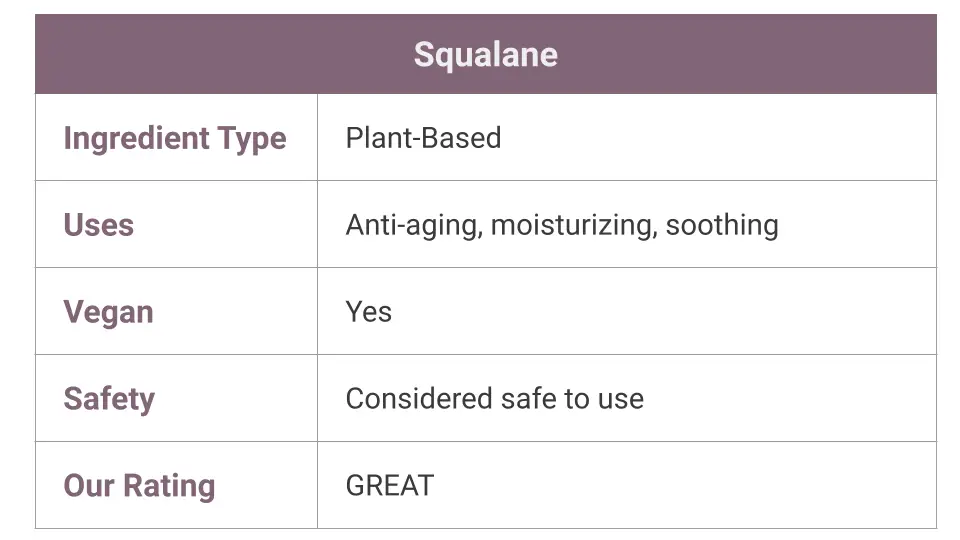
- Appearance – Squalane is an oil, so it’s a liquid when in concentrated form.
- How it’s made – Squalane is made from the hydrogenation of squalene (with an “e”).
- Popularity – Squalane is very popular and is typically found in a wide range of skincare products. In fact, squalane is so popular millions of sharks are killed annually because sharks are the richest sources of squalane. Luckily, 100% plant-based squalane is also available and growing in popularity.
- Abundance – As mentioned, squalane is derived from squalene, which is found in abundance in both plants and animals. That’s why you can have squalane sourced from shark liver oil as well as squalane from plant oils, such as cane sugar, olive oil, palm oil, and rice bran oil.
- Properties – Squalane is an excellent emollient that moisturizes, soothes, and hydrates the skin.
- Discovery – The unsaturated form of squalane was discovered by Dr. Mitsumaro Tsujimoto, who is well known for his work with oils and fats. He made the discovery after extracting the hydrocarbon from shark liver oil. The name for the hydrocarbon is derived from “Squalidae,” which is another name for dogfish sharks.
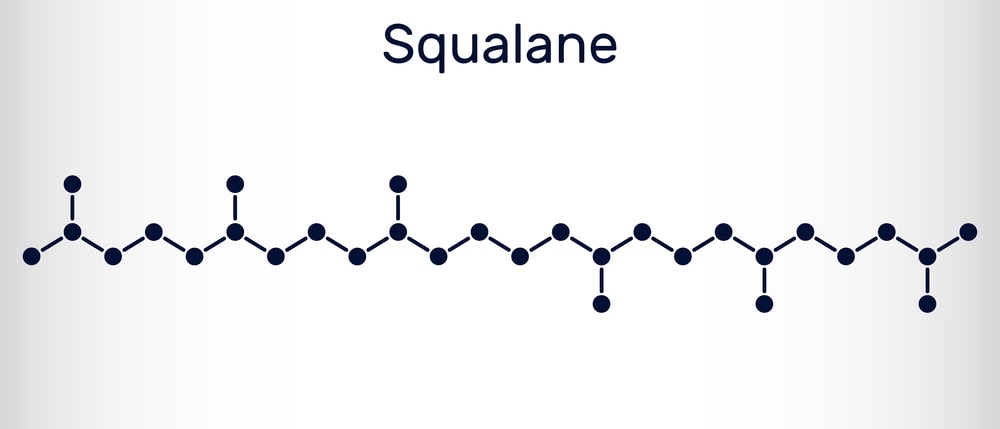
Squalane vs. squalene
It’s very difficult to talk about squalane without mentioning squalene and how the two oil compounds compare. Here’s what you need to know about the similarities and differences between squalane and squalene.
What Are the Differences Between Squalane and Squalene?
- The names – The first thing to remember is that although the names almost sound identical, squalane shouldn’t be confused with squalene with an “e.” This is one major difference to note when comparing the two. Otherwise, it’s easy to get your facts mixed up.
- Chemical structure – Squalane and squalene have different chemical structures. While squalane is a saturated fatty acid, squalene is unsaturated, meaning it has some reactive double bonds somewhere in its structure. Also, the chemical formula for squalane is C30H62, while C30H50 is for squalene.
- Stability – Squalane makes a better skincare ingredient than squalene because of its stability. Given that squalene contains reactive double carbon bonds, these carbon bonds tend to react when squalene is exposed to the air, so the oil will quickly become rancid. However, because squalane is “saturated,” it’s pretty inert and thus has a longer shelf-life.
- Occurrence – Squalane doesn’t occur naturally but only exists through the hydrogenation of squalene. On the other hand, squalene is found in the human body, mainly on the skin’s surface. Squalene constitutes up to 13% of all skin surface lipids that make up sebum. Its main function is to protect the skin from oxidative stressors, such as UV radiation, that can cause aging and skin disorders.
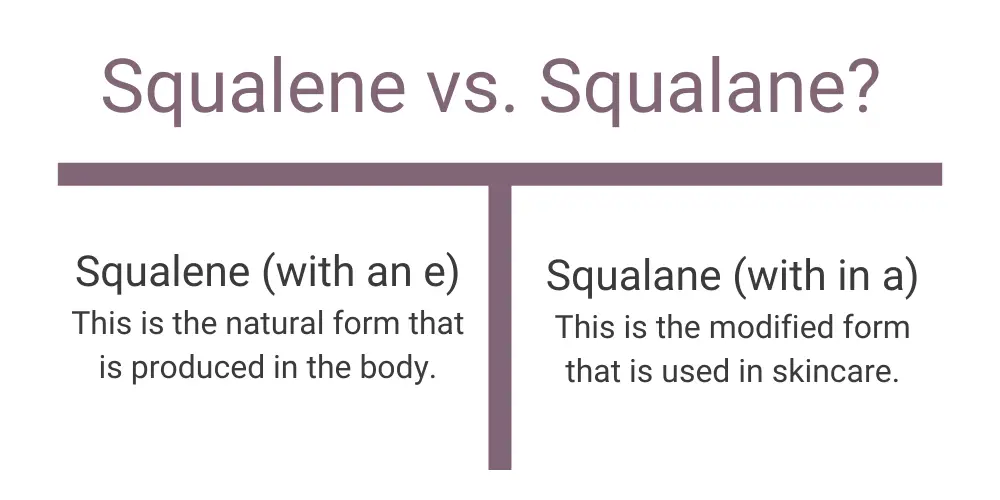
Are There and Similarities Between Squalane and Squalene?
- Properties – Squalane and squalene are both hydrocarbons and fatty acids.
- Benefits – Because they have the same properties, squalane and squalene are associated with the same benefits in skincare. These benefits include the ability to moisturize and hydrate as well as anti-aging and antioxidant benefits.
Why does the body need squalane?
To reiterate, squalane is a saturated version of squalene. In turn, squalene is one of the most common saturated fatty acids found in the sebaceous glands in human skin cells.
However, the rate of production of squalane drops significantly with age, causing the skin to become drier. Fortunately, squalene can be derived from both plant and animal sources.
It must first be converted to squalane by eliminating the double bonds through hydrogenation to ensure chemical stability. When applied externally, squalane is not easily oxidized and offers most skin benefits associated with squalene.
Squalane skin benefits
Squalane is associated with many benefits for the skin. It’s an excellent emollient that moisturizes, soothes, and hydrates the skin.
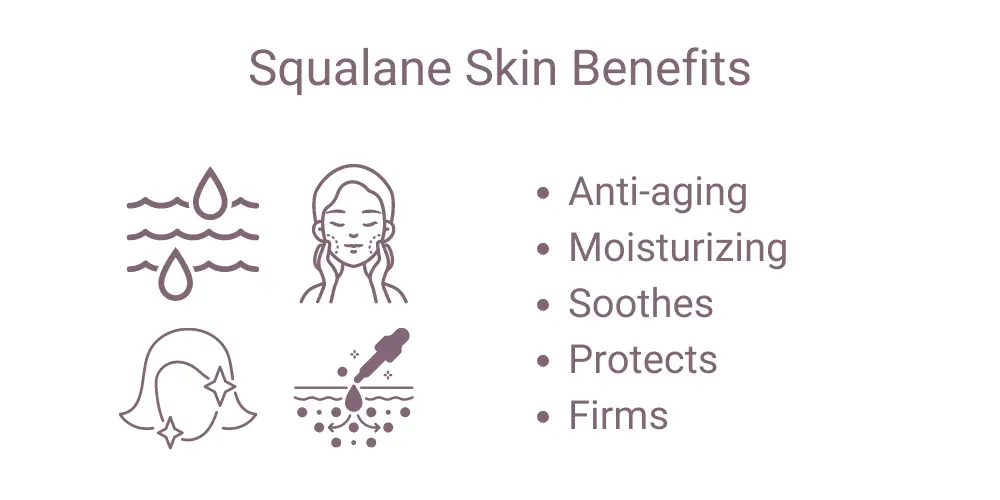
It’s a powerful moisturizer
Squalane is one of the best moisturizers available in skincare. Keep in mind that it’s derived from squalene, a natural oil that’s mostly found in human skin cells in sebum. It’s essential to keep your skin moisturized, especially when exposed to extreme hot and cold weather that can dry the skin.
The skin can usually moisturize itself, but the production of squalane dips as we get older, meaning everyone can benefit from the external application of squalane to keep the skin supple and luminous.
Has anti-aging properties
The free radical theory says that free radicals can damage cells and accelerate aging. However, this activity of free radicals can be neutralized by antioxidants. Therefore, squalane has an anti-aging effect because of its antioxidant properties. It prevents skin damage and helps the skin to look more youthful.
Can help treat acne
Having acne-prone skin makes it difficult to find the perfect skincare ingredient that won’t clog your pores or trigger breakouts. The good news is, squalane won’t make your blemishes worse. In fact, it also has anti-inflammatory properties that can alleviate skin irritation, redness, and swelling.
Squalane also helps control oiliness because it’s so similar to natural oils found in the skin.
Firms the skin
Squalane can help firm the skin by boosting the production of collagen. Collagen is the structural protein that contributes to the skin’s elasticity and hydration. Collagen strengthens and firms the skin, giving it a more youthful look. Its skin firming process may also be useful for smoothing out wrinkles and fine lines.
Helps to detoxify skin
Research shows that squalane might help to detoxify the skin. Your skin is the largest organ in the body, and it’s also exposed to many environmental and dietary toxins. In this strictest sense, skin detoxification refers to the removal of excess sebum, dirt, and dead skin cells.
Squalane is especially helpful for this because of the way it doesn’t clog pores. It can even prevent the need for a “skin detox” in the first place by protecting it from UV rays and other toxins from the environment.
Strengthens the skin’s protective barrier
The benefits of squalane can be explained in a nutshell by saying that this oil helps restore the skin’s protective barrier. This barrier mainly serves to keep the skin hydrated. Otherwise, the skin can’t function properly when dehydrated.
Skincare experts believe that squalane is so well-received as a topical addition because of its ability to mimic the natural oils found in sebum. Overall, by strengthening the skin’s protective barrier, squalane is able to provide the multiple benefits listed above.
Best squalane products
If you’re considering adding squalane to your skincare routine, here are some top suggestions that can get you started.
Biossaance Squalane + Vitamin C Rose Oil

Squalane is said to be suitable for all skin types, and the fact that it’s lightweight and non-greasy means it blends well with other skincare ingredients. This is why this squalane plus vitamin C rose oil combo could be a great addition to your skincare routine. All in all, this product promises to deliver brightening, hydration, and firming skin benefits.
Everyday Beauty 100% Pure Squalane Oil

This product comes in 2 oz and 4 oz bottles and is made from squalane derived from olives. The oil is 100% pure and suitable for face and skin use. Cold-pressed oil is generally said to have more benefits than oil derived through chemical processing since it retains most of its nutrients.
QRxLabs Squalane HA+ Moisturizing Cream

The combination of squalane and hyaluronic acid provides superior hydration and moisturizing benefits and is designed to keep your skin soft and supple. Hyaluronic acid is capable of drawing in moisture from the air, so your skin has all the moisture it needs.
Squalane is one of the most moisturizing oils because it keeps the moisture locked in by strengthening the skin’s protective barrier.
Trilane Squalane-Based Anti-Aging Moisturizer

Research shows that the amount of squalene in the body tends to reduce dramatically after the age of 30. This makes the skin susceptible to dryness. However, using a product like this squalane-based anti-aging moisturizer can improve matters.
Squalane moisturizes the skin so it feels and looks youthful. It also has antioxidant properties that fight free radicals that cause aging. The product contains other helpful ingredients like jojoba esters and tocopherols for enhanced results.
The Ordinary Squalane Cleanser

Squalane is usually available in its pure oil form, but this product has incorporated the ingredient into a cleanser formulation that also works as a makeup remover. This cleanser might work for you if you want a product that’s gentle on your skin. This squalane-based cleanser is soap-free, has a clear oil-like consistency when you rub it in and is designed to not dry out your skin.
Biossance Squalane + Lactic Acid Resurfacing Night Serum Bundle

This night serum bundle might be worth adding to your skincare kit. You get five products in a single purchase, and they all contain squalane paired with more beneficial ingredients.
For instance, squalane is combined with lactic acid, vitamin C rose oil, omega repair cream, probiotic gel moisturizer, marine algae cream. These non-toxic ingredients all work together to deliver smooth, young, and healthy skin.
Is squalane a good and safe ingredient?
Altogether, squalane seems to be a worthwhile skincare ingredient. It’s generally believed that squalane is an excellent emollient that will keep your skin healthy, flexible, and supple. Based on scientific evidence, squalane is a safe skincare ingredient.
A study was carried out to assess the safety of squalane on rabbit skin, and it was found that squalene did not cause irritation to rabbit skin and eyes at a concentration of 100%. The study also indicated that squalane would not cause sensitivity to human skin.
Other studies were also carried out on dogs and rats, and the results did not show any significant toxic effects on these animals. Today, squalane is approved for use in thousands of formulations, with more on the way since the squalene market size is projected to increase in the following years.
Squalene is not only a safe ingredient, but several studies have supported its beneficial effect on the skin. For starters, squalane has potential as a chemopreventive agent, meaning it could be effective against skin tumors. Squalane may also have a possible role in the alleviation of skin irritation.
Above all, it’s squalane’s role as a superior moisturizer that makes it such a popular skincare ingredient. Its classification as an emollient means it helps improve the skin’s barrier function, keeping it hydrated and improving the skin’s texture and function.
Frequently Asked Questions
Find answers to some of the more commonly asked questions about squalane.
Related Article You Might Like

